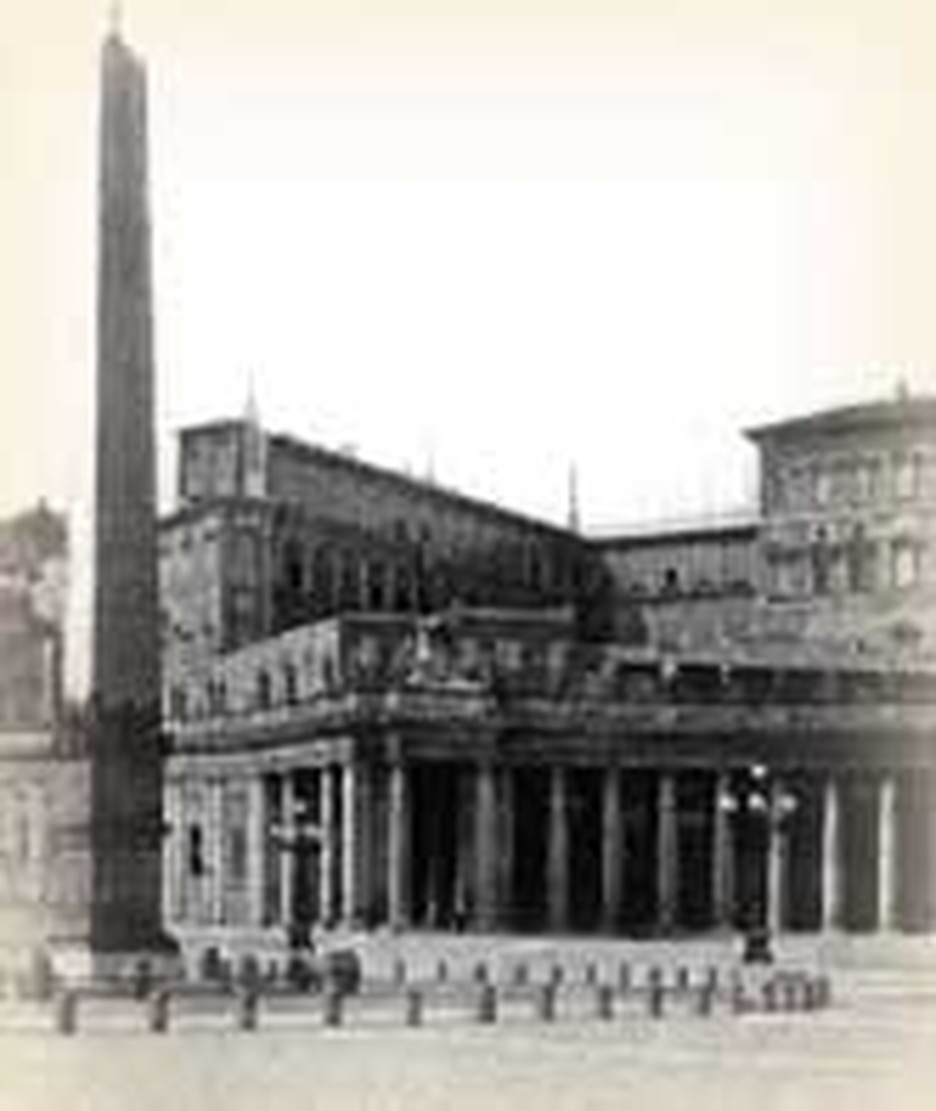
The story of the papacy in the 1800s was a story of riches to rags. When Pope Pius IX was crowned in 1846, the church owned the Papal States (17,000 square miles of Italian territory) as well as parts of Rome. When Pius IX died, he was a "Prisoner of the Vatican," and the Papal lands were gone.
For over a thousand years the church had been the biggest landlord in Italy. Under a good administrator like Gregory the Great, lands were well managed and the peasants cared for. Under other Popes, conditions were different. With the land came oppression of the peasants, abuse of power (prisons in the Papal States held thousands of political prisoners), and an unhealthy meddling by the church in Italian politics. Popes like Julius II are remembered as warriors rather than as pastors. Others, like Pius IX faced serious dilemmas brought on by their ownership of lands: should they exercise military force against other Catholics?
In Pius IX's case, his refusal to send troops from the papal states to fight the Catholic Austrians who held parts of Italy, showed how difficult it was to balance moral imperatives with political necessity. When Italy lost its war against Austria, mobs turned against the Pope. He fled to the Kingdom of Naples.
On February 9, 1849, the Italians declared a Republic, headed by the revolutionary leader Giuseppe Mazzini. After various shifts of control, Italy completed the takeover of papal lands in 1870. The newly consolidated Italian nation renounced the Vatican's status as a separate nation. It is arguable that the loss of lands was good for the church. Deprived of lands, papal leaders could, and to a large extent did, concentrate more on spiritual and moral issues. The Vatican, which had always dealt directly with foreign powers, continued to receive foreign ambassadors.
An uneasy coexistence existed between church and state. But the Italian government seemed sometimes to be just waiting for an excuse to pounce upon Vatican City and impose police rule. As a case in point, when Leo XIII was crowned, the secular authorities made it clear they would not protect the Vatican from riots. They allowed hoodlums to smash the windows of any house which showed lights in celebration of the new Pope.
In 1929, however, Mussolini needed the support of Catholics if he was consolidate his power base. He sought an agreement with the church. Under it Italy recognized the Sovereign status of the Vatican. On this day, February 11, 1929, with 109 acres, Vatican City became the smallest nation in the world. It was placed completely under the jursidiction of the pope. The Italian authorities agreed not to interfere any longer in the Vatican's internal affairs.
During World War II, the independence of the Vatican was a blessing to Jewish and allied fugitives. Acting covertly from the Vatican, church agents rescued many who would otherwise have perished. Today, its independence allows the Vatican to negotiate with the nations and religions of the world. It even retains observer status at the United Nations.
Bibliography:
- Begni, Ernesto. Vatican; Its history--its treasures. New York: Letters and Arts, 1914. Source of the image.
- Sugrue, Francis. Popes in the Modern World. New York: Thomas Y. Crowell, 1961.
- "Vatican." The Oxford Dictionary of the Christian Church. Edited by F. L. Cross and E. A. Livingstone. Oxford, 1997.
- "Vatican City, State of." New Catholic Encyclopedia. New York: Thomson, Gale, 2002-.
- Wright, Herbert F. "Vatican, the." Encyclopedia Americana. Chicago: Encyclopedia Americana, corp., 1956.
Last updated May, 2007.








